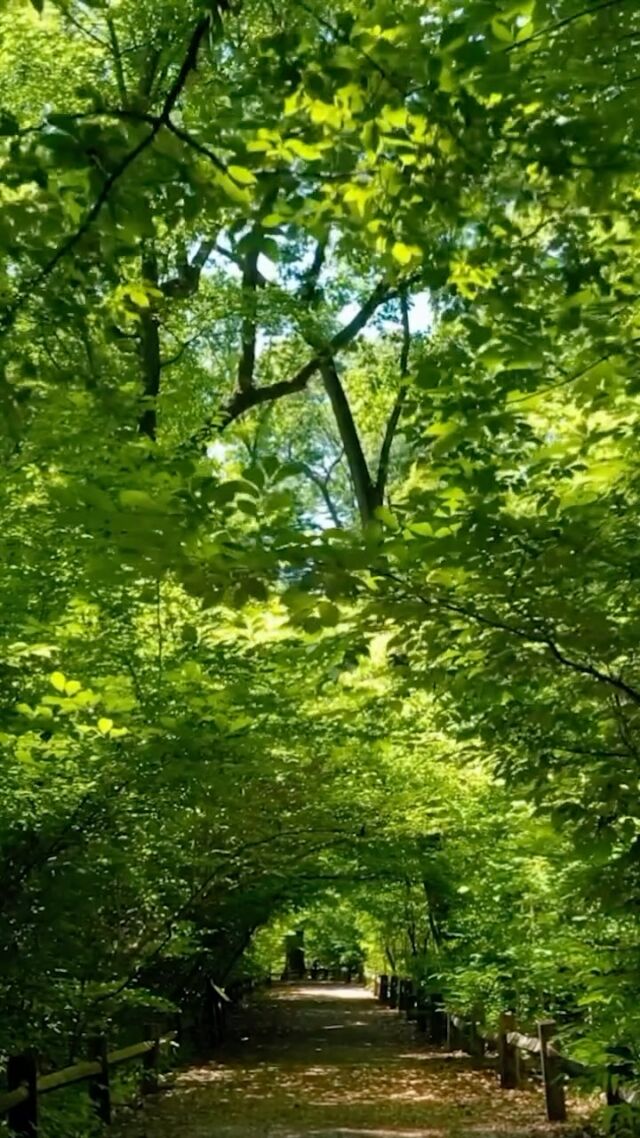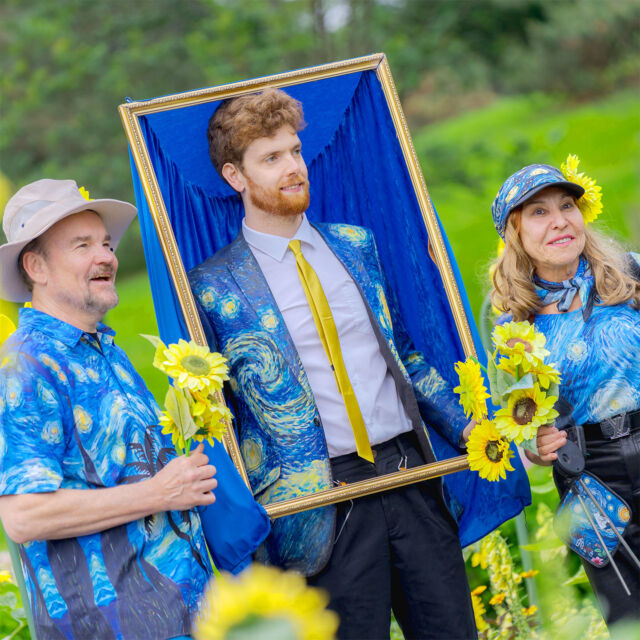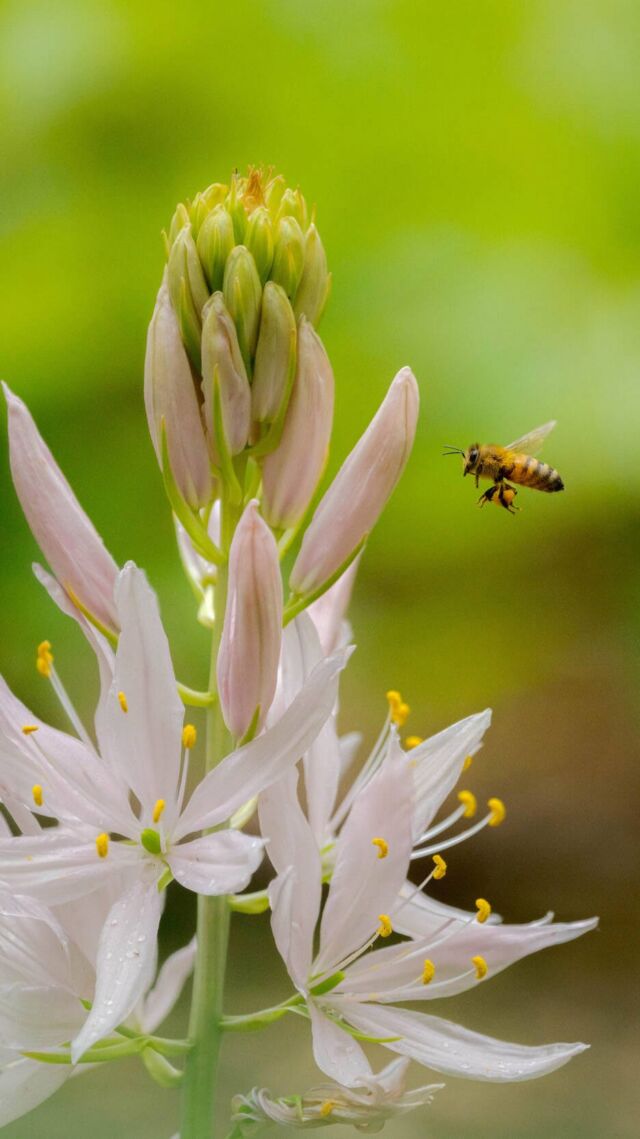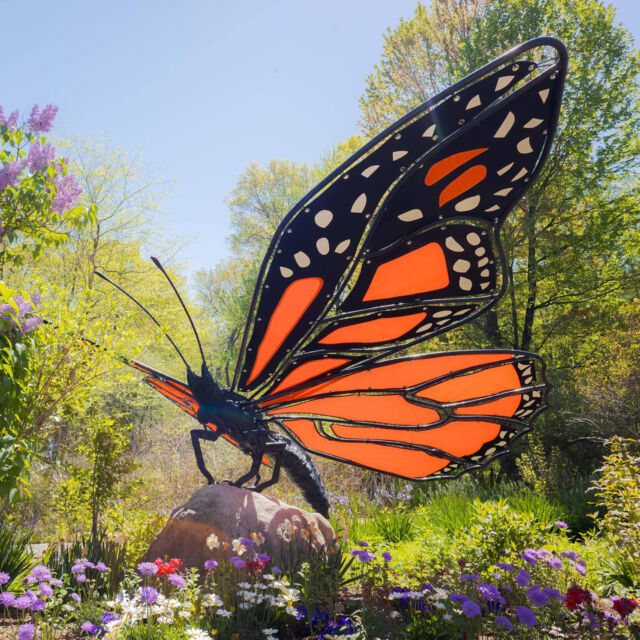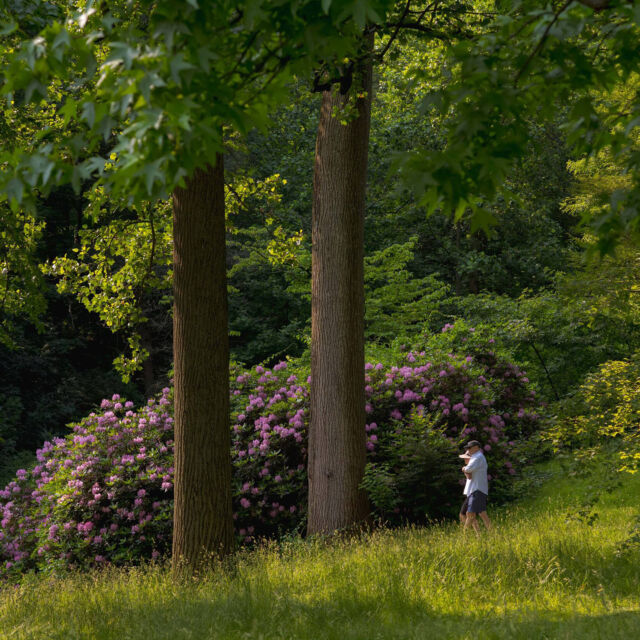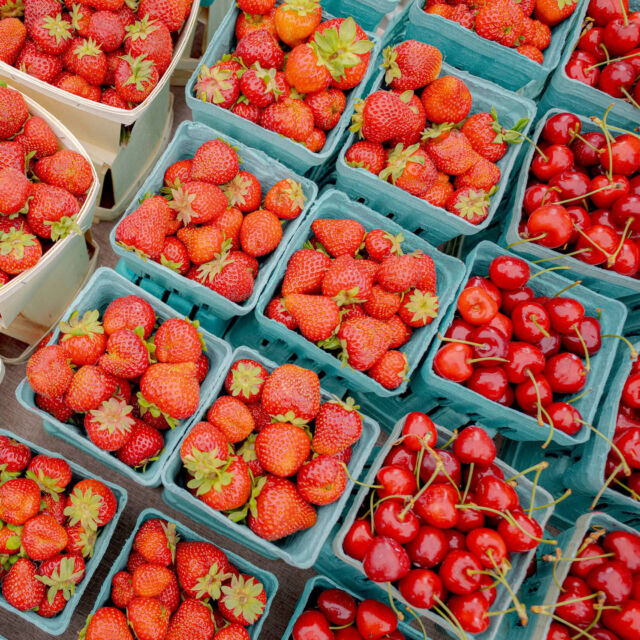Forests: Heroes of the Climate Crisis
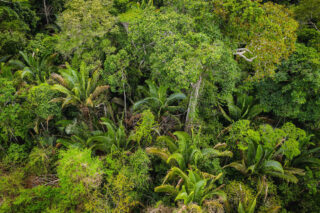
In our last post with NYBG scientist Brad Oberle, Ph.D., we talked about urban forests. We zoomed in and looked at NYBG’s woodland in particular: the Thain Family Forest. In this post, we’ll zoom out for a more global perspective and, well, truly see the forest for the trees.
Throughout history, our relationship with forests has been in flux. On one hand, forests are seen as treasures—we preserve them, we build them up, we make them into World Heritage Sites and protected conservation areas.
But at the same time, we are burning them down to clear land for agriculture and infrastructure.
“More than half of all the carbon that we have put into the atmosphere since the 1850s came when we burned forests down,” said Dr. Oberle. “It’s not all fossil fuel emissions. A huge part of carbon emissions is landscape transformation and specifically transforming forests.”
When they aren’t being burned, forests play a major role in the climate solution. A fourth of all carbon dioxide emissions from 1850 have been absorbed by forests. In fact, we can even measure the amount of carbon forests have “soaked up”—or sequestered—by measuring the trees’ circumference and density, and look at the increase in the amount of carbon that’s been stored in forests over time.
Let’s start with the largest forest in the world: the Amazon rain forest, in Brazil. At around 2.72 million square miles as of 2022, it is an incredibly important biome. It generates most of the rain that sustains it as a rainforest, helps regulate the global climate, serves as habitat for hundreds of thousands of species (including 40,000 plant species), and provides crucial ecosystem services to humans—including carbon sequestration.
Climate change and other anthropogenic environmental issues are impacting this and other species-rich forests in increasingly irreversible ways. As the planet warms, less evaporation and precipitation occur, and drought results. Over time, a rain forest can become a savanna.
Deforestation is a major contributor. The Amazon rain forest has lost about a fifth of its forest cover—almost 300,000 square miles—according to the Council on Foreign Relations. This level of deforestation has not only led to disappearing habitat and biodiversity, but the burning associated with clearing trees has also released major amounts of carbon dioxide back into the atmosphere—carbon that these ancient trees once took in for photosynthesis (see our last post for an explanation). This then causes more warming, and the cycle continues.
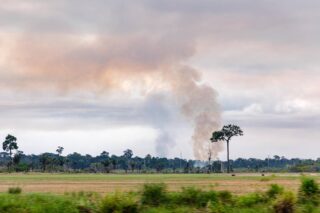
The Amazon rain forest has been severely threatened by deforestation due to burning of trees. This process not only damages the landscape and habitat, but is also a major emitter of carbon dioxide.
What’s happening in the Amazon is an example of a positive feedback loop, which over time can lead to a tipping point.
More environmental buzzwords! Let’s define them.
A feedback loop occurs when outputs of a system are routed back as inputs. When this relates to the environment, it means that an initial process (here, deforestation) will cause changes in other processes that in turn influence the initial one.
- Deforestation → less evapotranspiration → less precipitation → increased drought → dieback of vegetation + wildfires → deforestation
A tipping point is a critical threshold that, when exceeded, leads to accelerated and even irreversible changes in the climate system. Often, these changes are self-perpetuated with ongoing positive feedback loops.
We’ve talked enough about the scary stuff, now let’s get to the good news: we’ve got solutions! Including—you guessed it—forests.
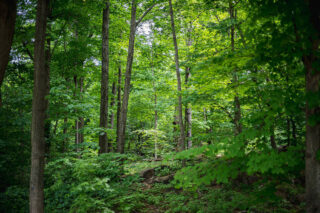
In our next post, we’ll discuss an example of a tipping point on a smaller scale, and one that has a happy ending. But for now, we’ll focus on the good of forests as a whole.
Forests are natural carbon sinks. They’re the heroes of the natural world: tall, sturdy, and peaceful combatants of carbon dioxide emissions since before climate change became anthropogenic. But in our modern world, we can also think of forests in terms of economic policy—through yet another environmental phrase: carbon offsetting.
Carbon offsetting is a scheme that allows individuals, and usually companies, to compensate for their emissions by investing in sustainable projects around the world that provide an equivalent emission reduction elsewhere. Often, this comes in the form of an afforestation project. So, say a company knows they’ll exceed their limit for carbon emissions. They can buy “carbon credits” and invest in planting forests in another country.
There is a lot to consider when it comes to carbon offsetting, such as if the impact will be beneficial enough and measurable, and if the area will benefit from an environmental project. Carbon offsets are often just band-aids that don’t get to the real problem of reducing or mitigating greenhouse gas (GHG) emissions. However, the nature-based solution of planting forests is one of the best strategies we have.
The keyword here is forests—trees in their multitudes. We must understand trees as complex systems and dynamic carbon absorbers. Though they take in carbon, the bulk of the carbon will be returned to the atmosphere naturally, after many years, through decomposition. There is no harm in planting one tree, but it doesn’t do as much to take in carbon as a whole forest would.
“If those carbon offsets are structured in such a way that you’re actually encouraging a whole forest that has a long term and healthy future as being protected…as a forest that is intended to store carbon,” said Dr. Oberle, “I think you can be fairly certain that your payment will support climate mitigation by soaking [up] carbon and keeping it there for a long time.”
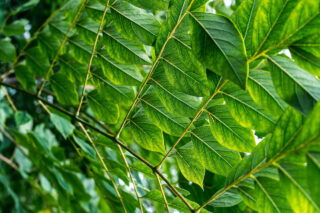
And the benefits from forests aren’t limited to pulling carbon out of the atmosphere. Forests also cool cities, keep nutrients out of the waterways, reduce stormwater, and enhance biological diversity—especially in urban areas.
“I see carbon offsetting supporting forest conservation and afforestation [as] not only a good climate change strategy, but just a good strategy, period,” said Dr. Oberle.
Alright, let’s take this back down to a smaller scale—let’s say, a backyard in the Bronx; how can we apply carbon sequestration to an urban area? This ties into another aspect of Brad Oberle’s research: applied ecology for carbon sequestration—specifically, his work with “tiny forests.”
Dr. Oberle spoke of one project where he measured a “food forest” that was about the size of a backyard, and included 45 species of edible perennial plants.
“We just kept track of how much carbon was in the soil over a couple of years,” said Dr. Oberle. “It stored a lot and it spread very quickly, and stored it in a really interesting way.”
Forests—whether it be the Amazon, the Thain Family Forest, or the community gardens in the city—make a difference. And as environmental stewards, we can be their keepers, whether that means cultivating a small forest in our backyard or advocating for the preservation of those both in New York and abroad.
“Anyone with a backyard or anyone who can decide what kind of trees get planted in a public space can decide whether or not to implement a project like this,” said Dr. Oberle. “It’s something people are doing all over the world with a lot of enthusiasm…[and] that enthusiasm is transformative.”
SUBSCRIBE
Enter your email address to subscribe to this blog and receive updates on new posts.
